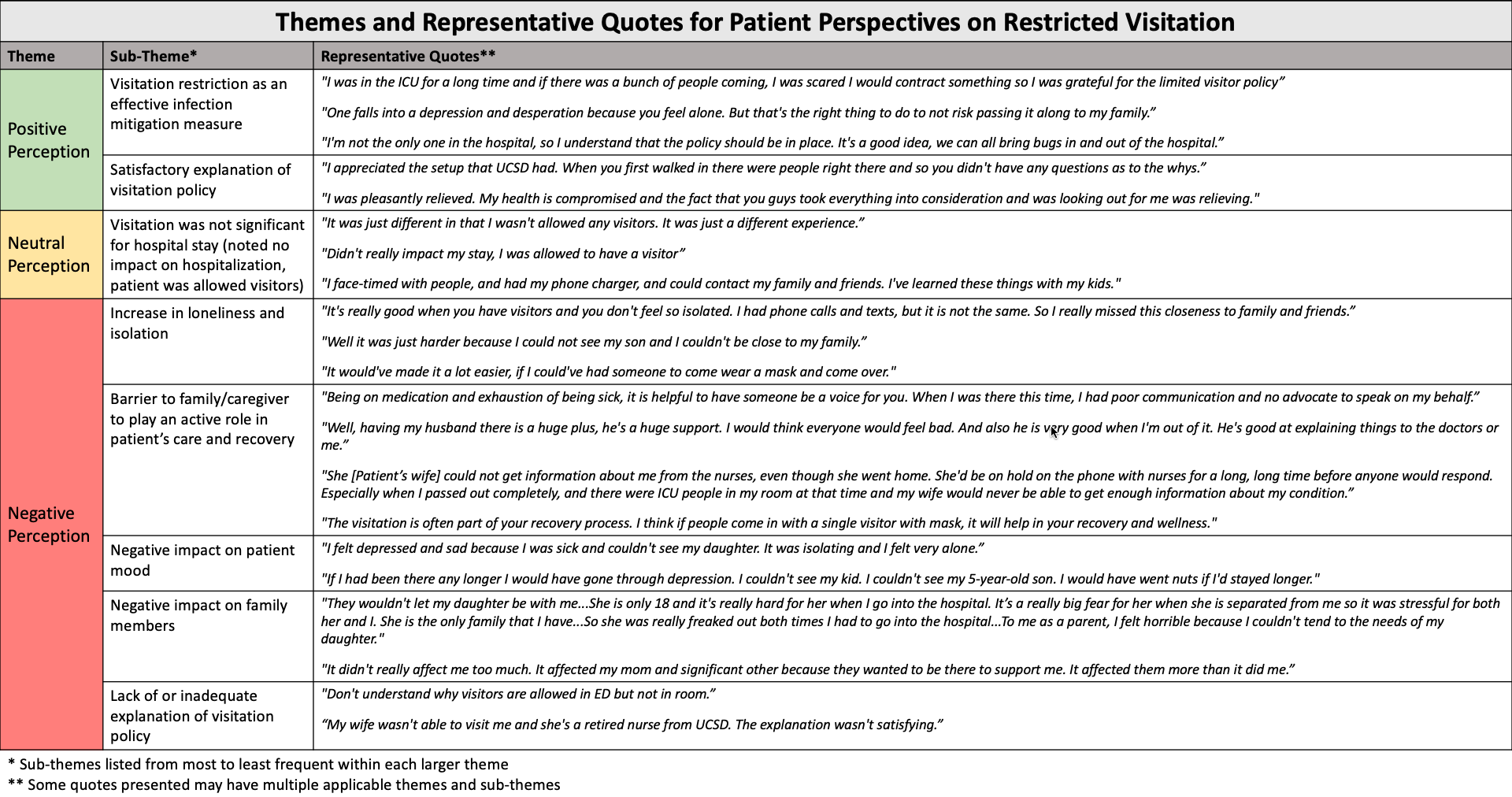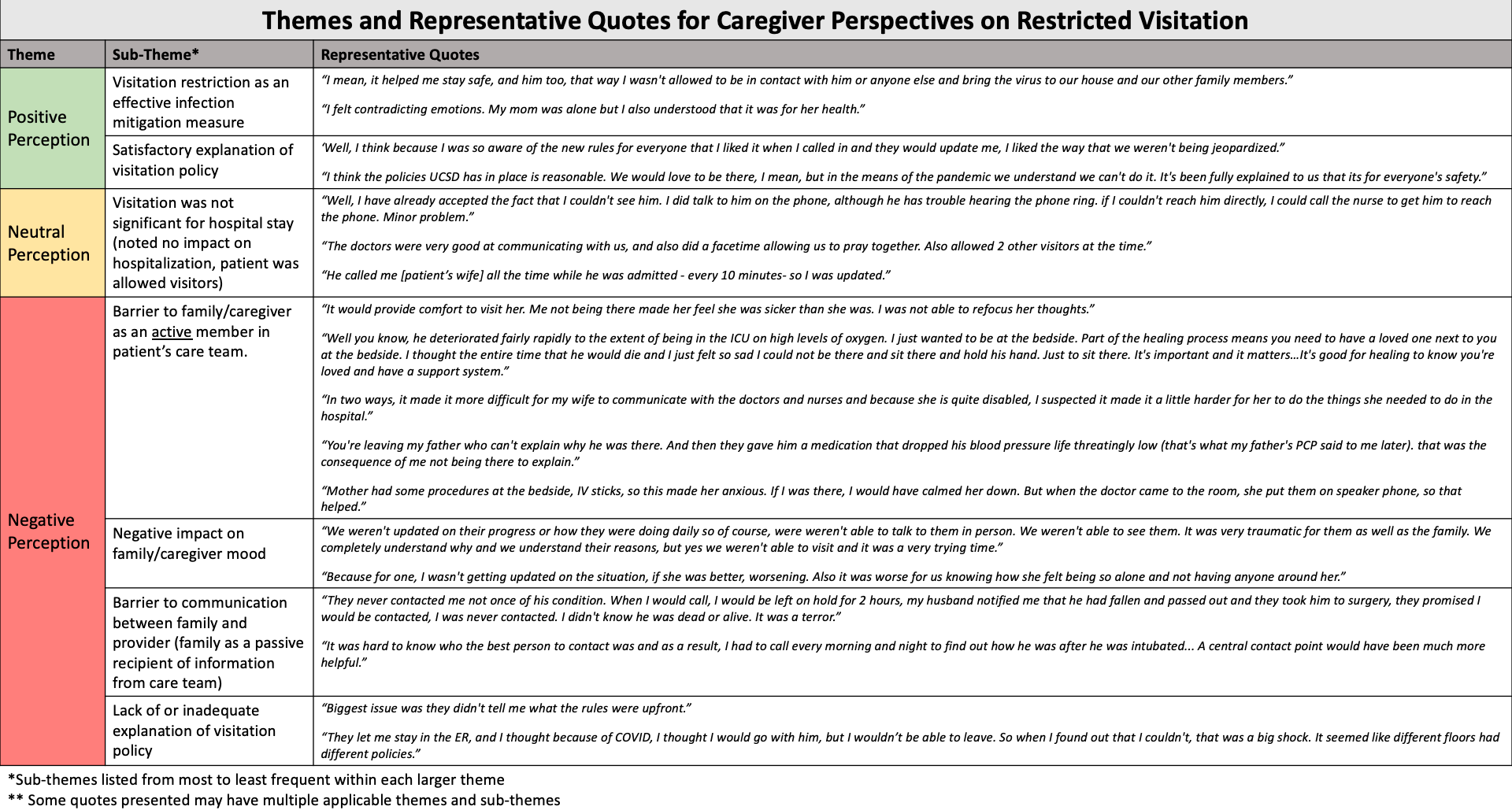Background: Family members and caregivers serve valuable roles at the hospitalized patient’s bedside as emotional support systems, patient advocates, and decision makers (1). Hospital visitation restrictions (such as those implemented during the COVID-19 pandemic) may come at a cost to patient and caregiver perceptions of care quality and patient safety. Congruent with CDC guidelines during the COVID-19 pandemic, the University of California, San Diego Health system restricted visitors for hospitalized patients in March 2020, with limited exceptions for reasons such as end-of-life or altered mental status. Our study describes perspectives of patients and caregivers affected by restricted hospital visitation policies in a pandemic setting.
Methods: A telephone-based survey was administered to randomly selected adult patients and their caregivers discharged from the Hospital Medicine Service from 3/15/2020 – 8/15/2020. As part of the larger survey, participants were asked an open-ended question on how the restricted visitation policy affected their experiences with the hospitalization. Restricted visitation was implemented throughout the entirety of the study period. Patient and caregiver responses were transcribed verbatim and subsequently underwent thematic analysis utilizing constructivist grounded theory methods performed by three independent coders (2).
Results: Of the 391 eligible patients, 195 (49.9%) were reached via phone. 100 patients consented to the survey and responded to the open-ended restricted visitation question, of which 43% had confirmed or suspected COVID-19 diagnoses and 47% had isolation precautions (independent of COVID status) during their hospital stay. 44 caregivers responded, of which the majority were the patients’ spouses. Analysis revealed three broad themes defined by positive, negative, or neutral sentiment towards restricted visitation and further categorized by subthemes as delineated in Tables 1 and 2. Positive patient (36% of respondents) and caregiver (34% of respondents) sentiments were most often attributed to the policy’s use in infection mitigation. A greater proportion of caregivers (58%) expressed negative sentiments compared to patients (38%). Negative sentiments were most often associated with increased patient loneliness/isolation during hospitalization and the inability for caregivers/family to serve in an active role on the patient’s care team at bedside. Of note, 6% and 15% of patients and caregivers, respectively, expressed both positive and negative sentiments about the visitation policy. Furthermore, patients and caregivers who reported no significant impact of the restricted visitation policy on the hospitalization frequently referenced the use of distanced communication modalities (phone, video calling, etc.) as a protective factor against potential harms of restricted visitation.
Conclusions: Patients and caregivers identified restricted visitation in a pandemic setting as a protective policy against the spread of infection. However both groups, particularly caregivers, more often cited harms of such policy in preventing caregivers from advocating for and supporting patients at bedside. Investing in virtual communication technology, standardizing remote rounding mechanisms and implementing provider-based communication training programs may improve caregiver and patient experience when visitation restrictions are enforced.


